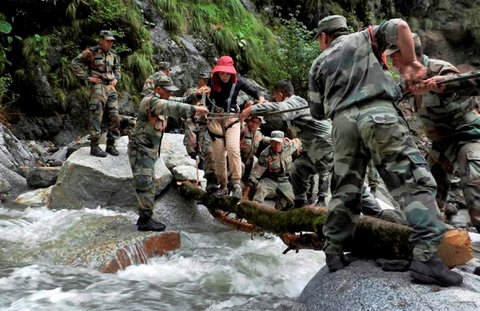When Everest Climbers Became Rescue Men
NEW DELHI— On the morning of June 17, Prakash Bhatt, a 36-year-old soldier in the Indian Army and an instructor at the government-run Nehru Institute of Mountaineering in Uttarkashi in the northern Indian state of Uttarakhand, was teaching a class. Mr. Bhatt is one of the 10 soldiers on a three-year assignment to the mountaineering institute, which trains mountaineering enthusiasts and provides lessons in search and rescue operations.
Midway through, he had to stop his class when Col. Ajay Kothiyal, the head of the institute, called an emergency meeting. The instructors learned that flash floods had hit Uttarakhand and that tens of thousands of pilgrims were spread across the state visiting four major Hindu pilgrim centers — Badrinath, Kedarnath, Yamnotri, and Gangotri – which form the four stops of the Chota Char Dham pilgrimage in the Himalayan state.
Colonel Kothiyal was enlisting volunteers to join the operation to rescue people stranded across the state. “People are stranded,” Colonel Kothiyal told the volunteers. “You need to be prepared to make tracks, create temporary bridges to be able to pull them out.” Mr. Bhatt, his fellow instructors, and a group of their current and former students signed up that day.
Mr. Bhatt, who grew up in Uttarakhand and knew its mountainous geography intimately, began mapping the flooded areas in his mind. “We began to anticipate the kind of equipment we would need, which road might be broken, which bridge might have collapsed,” he said.
But as they prepared themselves, the volunteers couldn’t foresee that the floods would kill more than 1,000 people, and that around 100,000 would have to be rescued.
On June 18 , Mr. Bhatt and his team started for Sainj village, carrying backpacks weighing almost 15 kilograms, or about 30 pounds, laden with ropes, anchors, pulleys, pitons and other mountaineering equipment. After trekking nearly 20 kilometers, or about 12 miles, the team, which included a lone girl and boys as young as 17, reached Sainj, a village of nearly 300, by early afternoon….
Click here to read more

